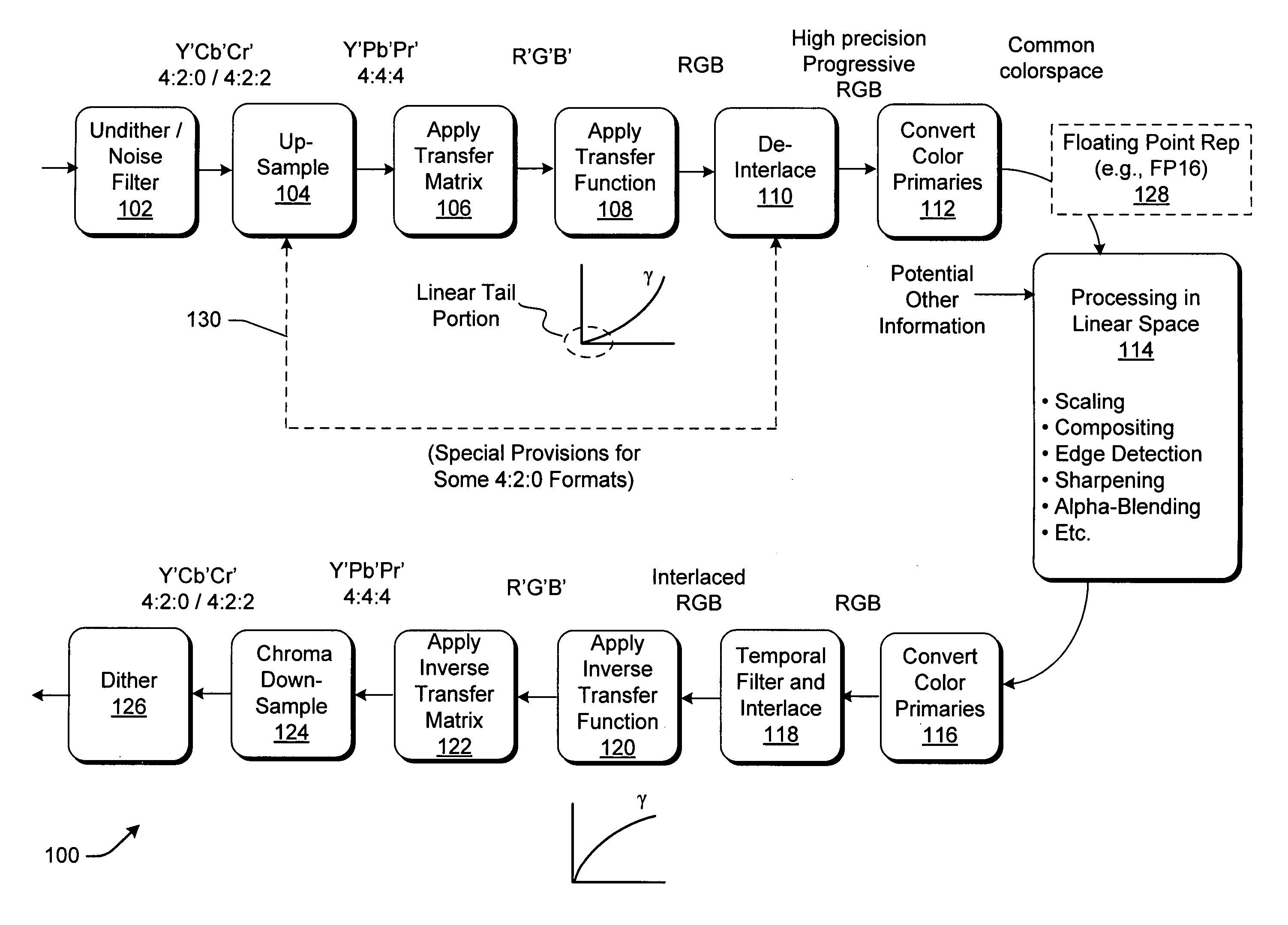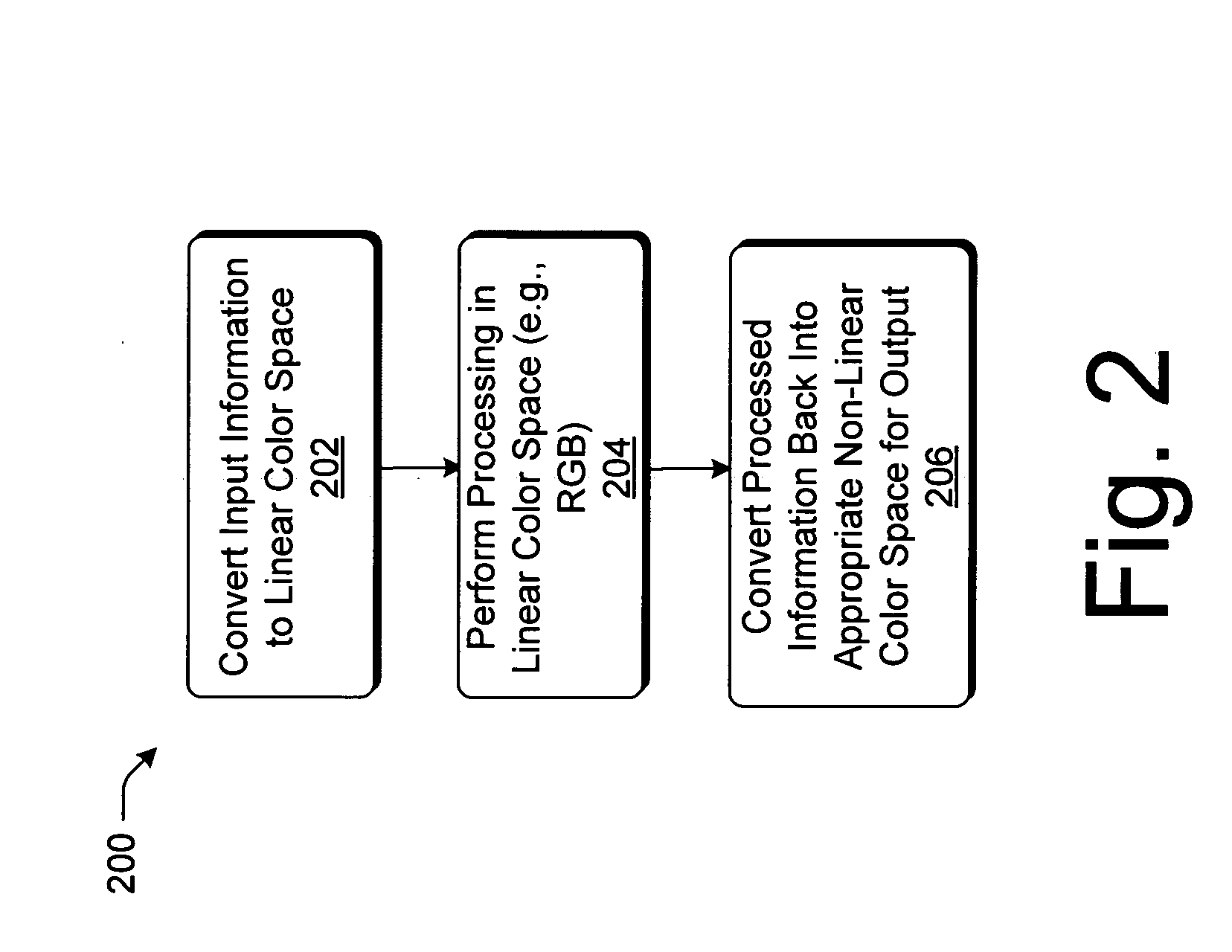Image processing using linear light values and other image processing improvements
a linear light value and image processing technology, applied in the field of image information processing strategies, can solve the problems of many video standards that cannot be designed to accommodate complex processing fuctionality, many video standards that are not well founded and need to be reconsidered, and many video standards that are not designed to meet the needs of complex processing, etc., to achieve the effect of improving processing speed, reducing the amount of artifacts, and high precision
- Summary
- Abstract
- Description
- Claims
- Application Information
AI Technical Summary
Benefits of technology
Problems solved by technology
Method used
Image
Examples
Embodiment Construction
The following description sets forth various strategies for improving an image processing pipeline. The strategies propose new ways of processing image information based on a reconsideration of entrenched concepts in the art. A first class of improvements (described in Section A) can abstractly apply to any image processing pipeline. A second class of improvements (described in Section B) apply more specifically to certain technology-specific or implementation-specific applications of image processing pipelines.
According to one exemplary strategy, image information received by an image processing pipeline is converted into a linear form and then processed in that form. In one exemplary implementation, for instance, received luma-related image information (e.g., Y′CbCr) is converted into a linear RGB form and processed in that form. Exemplary processing tasks can include de-interlacing, resizing (scaling), compositing, alpha-blending, edge detection, sharpening, and so forth. Proc...
PUM
 Login to View More
Login to View More Abstract
Description
Claims
Application Information
 Login to View More
Login to View More - R&D
- Intellectual Property
- Life Sciences
- Materials
- Tech Scout
- Unparalleled Data Quality
- Higher Quality Content
- 60% Fewer Hallucinations
Browse by: Latest US Patents, China's latest patents, Technical Efficacy Thesaurus, Application Domain, Technology Topic, Popular Technical Reports.
© 2025 PatSnap. All rights reserved.Legal|Privacy policy|Modern Slavery Act Transparency Statement|Sitemap|About US| Contact US: help@patsnap.com



